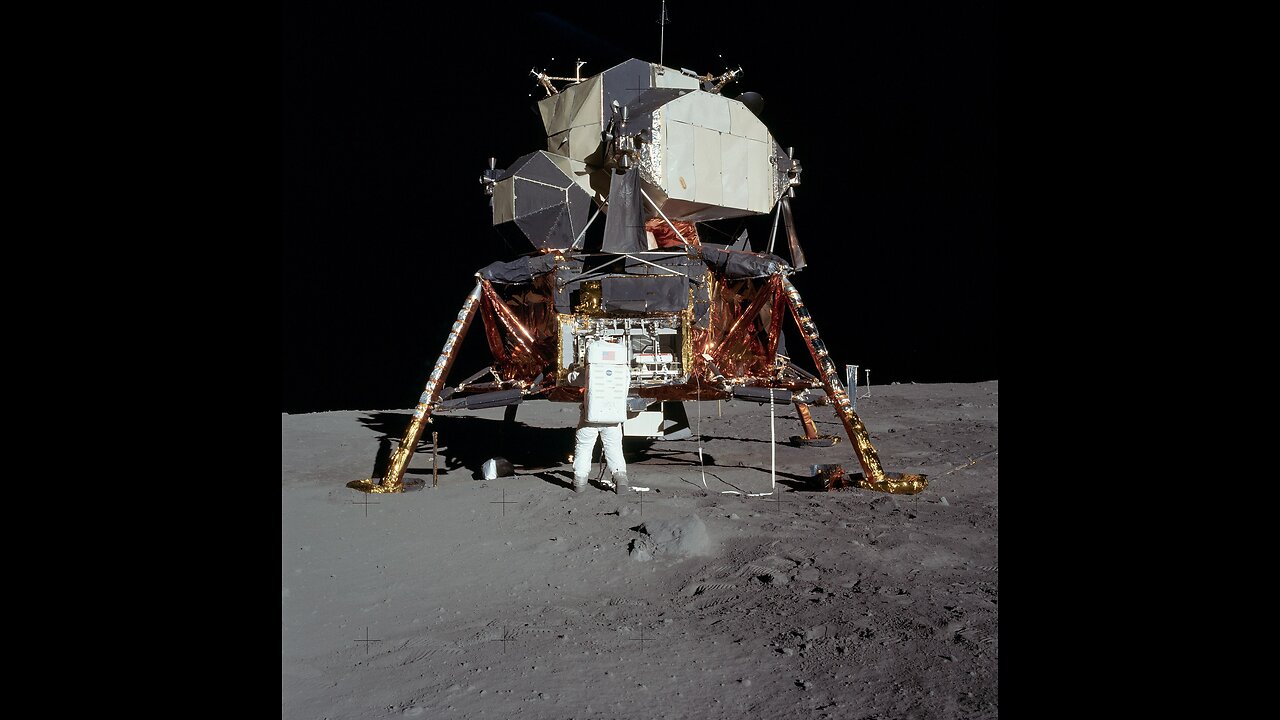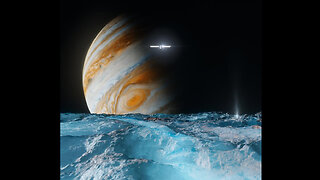Premium Only Content

The Lunar Module
The Lunar Module, also known as the LM, was the spacecraft that was designed to land astronauts on the Moon during the Apollo missions. It was developed by NASA and built by the Grumman Aircraft Engineering Corporation.
The Lunar Module was a two-stage spacecraft that consisted of the descent stage and the ascent stage. The descent stage was the lower half of the spacecraft and contained the rocket engines, landing gear, and other equipment needed for landing on the Moon. The ascent stage was the upper half of the spacecraft and contained the cockpit, life support systems, and the engine needed to lift off from the Moon and rendezvous with the Apollo Command Module in lunar orbit.
The Lunar Module was a critical component of the Apollo missions, as it was the only spacecraft that was designed to land on the Moon's surface. The spacecraft was launched into lunar orbit by the Apollo Command Module, and then the Lunar Module was separated from the Command Module and began its descent to the Moon's surface.
During the descent, the Lunar Module's engines were used to slow the spacecraft down and guide it to a landing on the Moon's surface. Once the Lunar Module had landed, the astronauts would climb down a ladder and step onto the lunar surface.
After the astronauts had completed their activities on the Moon, they would climb back into the Lunar Module's cockpit and use its engine to lift off from the Moon's surface. The ascent stage would then rendezvous with the Apollo Command Module in lunar orbit, and the astronauts would transfer back to the Command Module for their journey back to Earth.
The Lunar Module was a remarkable engineering achievement and played a crucial role in the success of the Apollo missions. It was designed to withstand the harsh conditions on the Moon and to keep the astronauts safe during their journey to and from the lunar surface.
Quality NASA products & Gift Ideas Available Here! https://amzn.to/47AYzPt
Credit: NASA
-
 1:04:40
1:04:40
NASA Videos Plus
6 months agoEuropa Clipper Mission Countdown: Preview to Launch!
174 -
 2:16:31
2:16:31
Redacted News
4 hours agoLeaked Audio EXPOSES AIPAC's Shocking Grip on Trump's National Security Team and Inner Circle
149K90 -
 1:13:38
1:13:38
Dr. Drew
8 hours agoSalty Cracker: Tariffs & Deportations & 3rd Trump Term, Oh My! – Ask Dr. Drew
45.3K53 -
 55:18
55:18
LFA TV
8 hours agoUndoing Decades of Corruption Won’t Come Easy | TRUMPET DAILY 4.10.25 7PM
4.92K -
 DVR
DVR
theDaily302
11 hours agoThe Daily 302- James Patrick
4.65K1 -
 LIVE
LIVE
Quite Frankly
6 hours ago"Top 10 CIA Ops, Esoteric Hollywood, and More" ft. Jay Dyer 4/10/25
900 watching -
 58:40
58:40
Motherland Casino
19 hours agoMel x Ara
1.14K -
 1:11:40
1:11:40
crystalkittn
20 hours ago!MOTHERLAND 🎰✨ $50 GIVEAWAY!! 🎰✨ 100 FREE SPINS + 250% DEPO BONUS ON SIGNUP
1.71K4 -
 12:53
12:53
China Uncensored
11 hours agoTrump’s Tariffs Ruined China’s Master Plan
13.3K14 -
 39:56
39:56
Kimberly Guilfoyle
5 hours agoBreaking News on China Tariffs, Plus Live with AJ Rice & Daniel Turner | Ep212
51.9K10